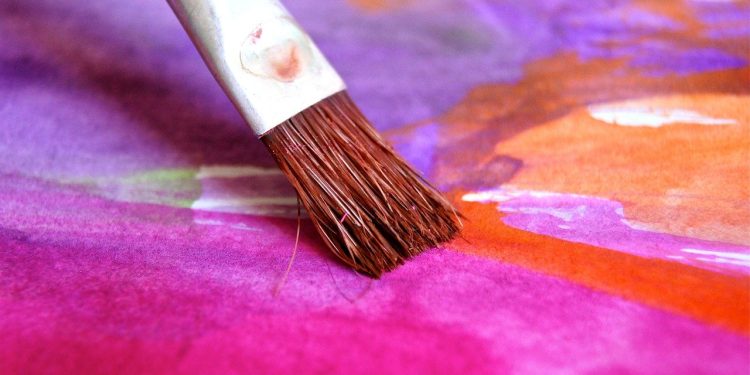When people think of watercolours, the mind wanders to delicate 19th-century landscapes detailing rolling hills or calm seas, but the history of this expressive medium spans back much farther. Watercolours date back to the stone age when cave paintings depicting animals and humans were created using natural pigments from charcoal and ochre.
As time passed, watercolours were utilised in ancient civilisations, beginning with the Egyptians, who would often paint onto walls and papyrus. Most of these artworks have since been lost, but pieces stored in pyramids in dry, dark conditions can still be viewed today.
Similarly, in ancient Rome and Greece, watercolours were used both decoratively and to paint on easels. In Traditional Chinese cultures, watercolours were frequently used for decorative art before transitioning into an independent art form focusing on watercolour landscapes.
Eventually, watercolours made their way into Europe during the middle ages, where artists would use watercolour pigments to illuminate manuscripts and add colour to world maps. However, it wasn’t until the Renaissance era in the 15th and 16th centuries that watercolour truly came into its own as a legitimate and expressive art medium.
Watercolours, as we know them today, are deeply rooted in the works and experimentation of artists in the Northern Renaissance. When exploring the history of watercolours, the first artist we must look to is German painter Albrecht Dürer, one of the pioneers of watercolour paintings. Dubbed the ‘Dürer Renaissance’, the artist recognised the medium’s potential, capturing highly detailed and realistic studies of nature, landscapes and wildlife.
His 1502 work ‘Young Hare’ is one of the most famous watercolours in our history, famed for being a masterpiece in observational art. It was artworks such as these that inspired other artists during this period, most notably Hans Bol, who went on to found a school of watercolour painting. The way in which Dürer played with luminosity and the transparency of the pigments and the canvas inspired artists throughout Germany to do the same.
It wasn’t until the 18th century when watercolour painting once again made its mark in Western Art with artists such as Paul Sandby, J.M.W. Turner, and Thomas Girtin re-establishing watercolour’s place in the art world. By the middle of the 19th century, watercolour was a well-respected medium, being frequently utilised by artists across the UK and Europe. The English Art Society had even seen the formation of the Society of Painters in Water Colours and the New Water Colour Society.
The rich history of watercolours spans time, but unfortunately, due to the poor lightfastness of watercolour pigments and the fragility of their canvases, many works have faded, been lost or destroyed. Those pieces that remain are often hidden away in dark, temperature-controlled spaces to ensure their survival.
As such, UK based charity Watercolour World has made it their mission to protect and preserve historical watercolours by digitising and archiving them in their free online database. To date, the organisation has collected over 80,000 images in their ever-growing archive, with watercolour works from both public and private collections from around the world.
Through a unique collaboration with Fujitsu, the organisation can carefully scan original watercolour works using LED technology. This allows them to capture the most colour and detail accurate image that can then be added to their collection without causing any damage to the original piece.
Watercolour World’s website holds collections from around the world, showing parts of peoples lives, cultures, countries and histories never before seen. Before the camera, there was watercolour, and it is through these unique works, we can see the world captured by the artist’s lens. If you would like to explore Watercolour World’s ever-growing database, you can visit their website for free here.










